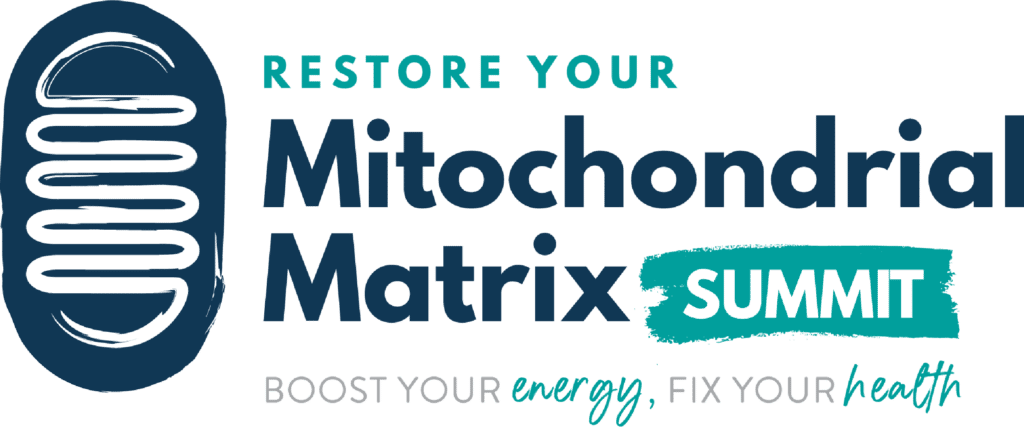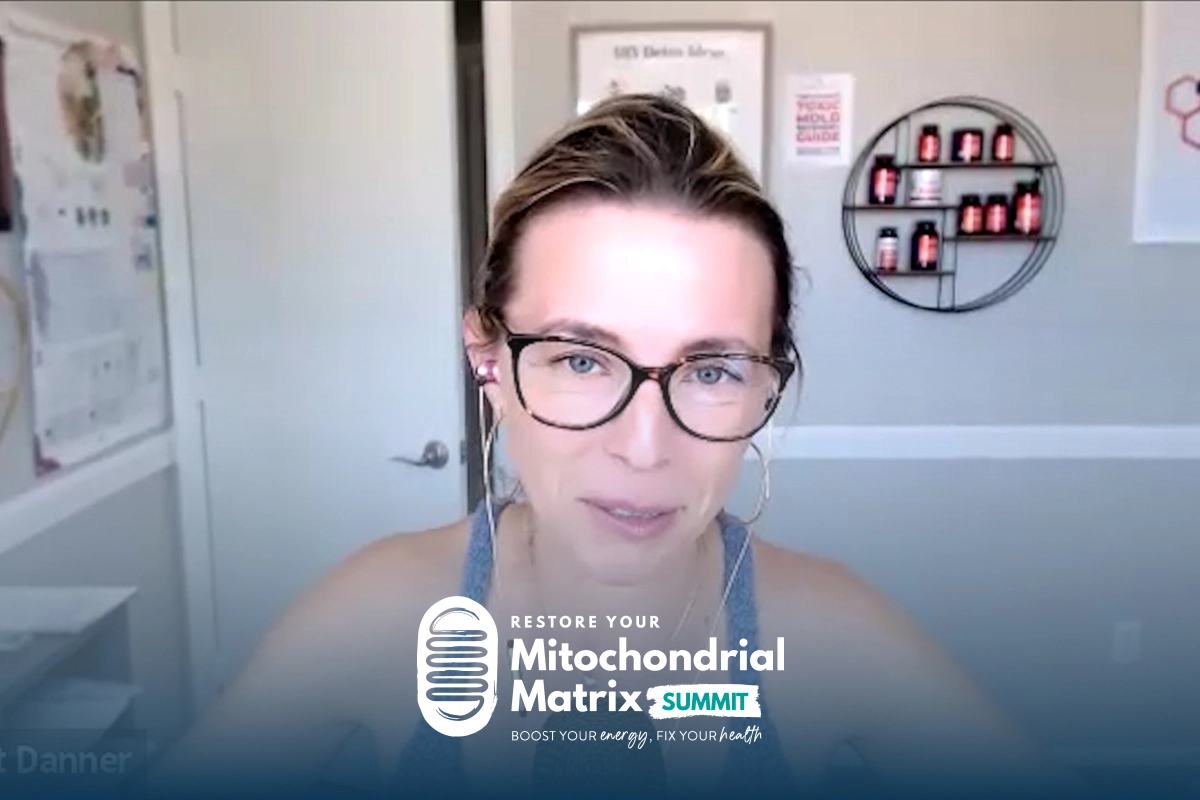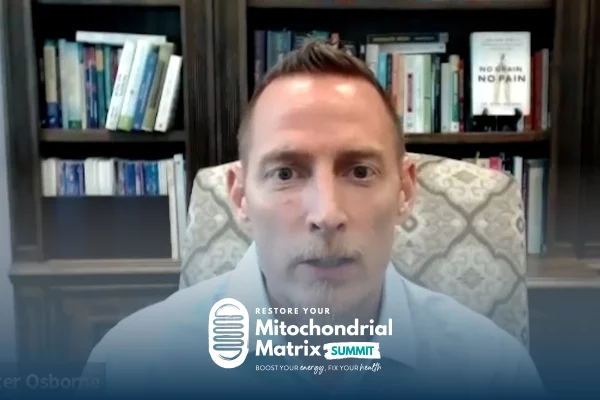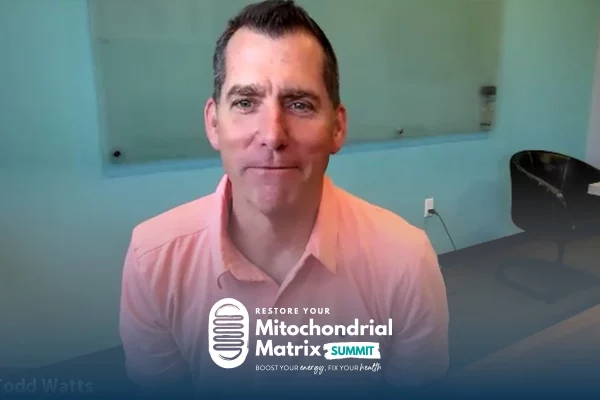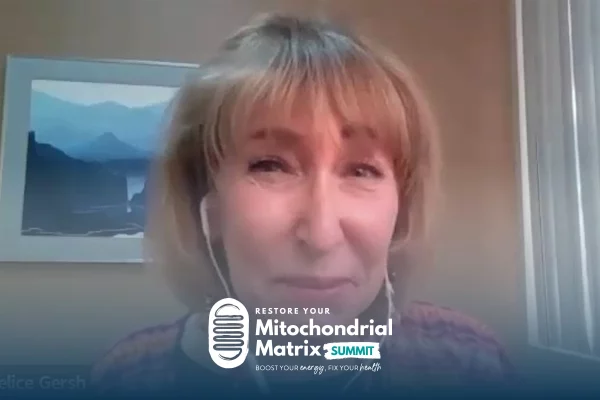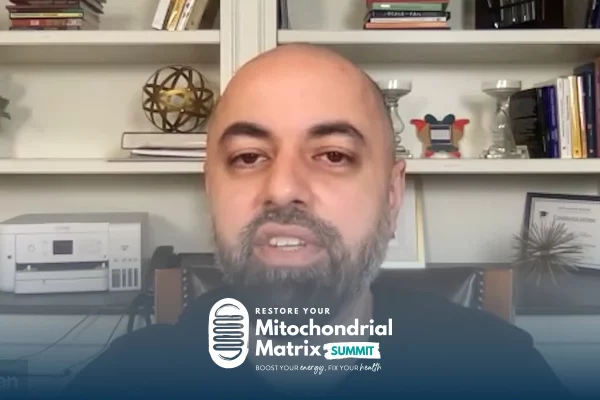Join the discussion below
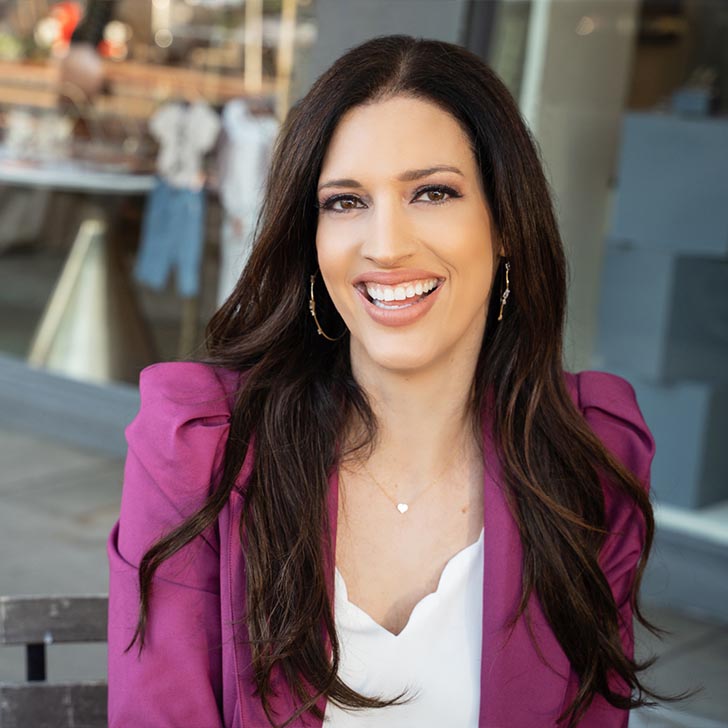
Laura Frontiero, FNP-BC, has served thousands of patients as a Nurse Practitioner over the last 22 years. Her work in the health industry marries both traditional and functional medicine. Laura’s wellness programs help her high-performing clients boost energy, renew mental focus, feel great in their bodies, and be productive again.... Read More
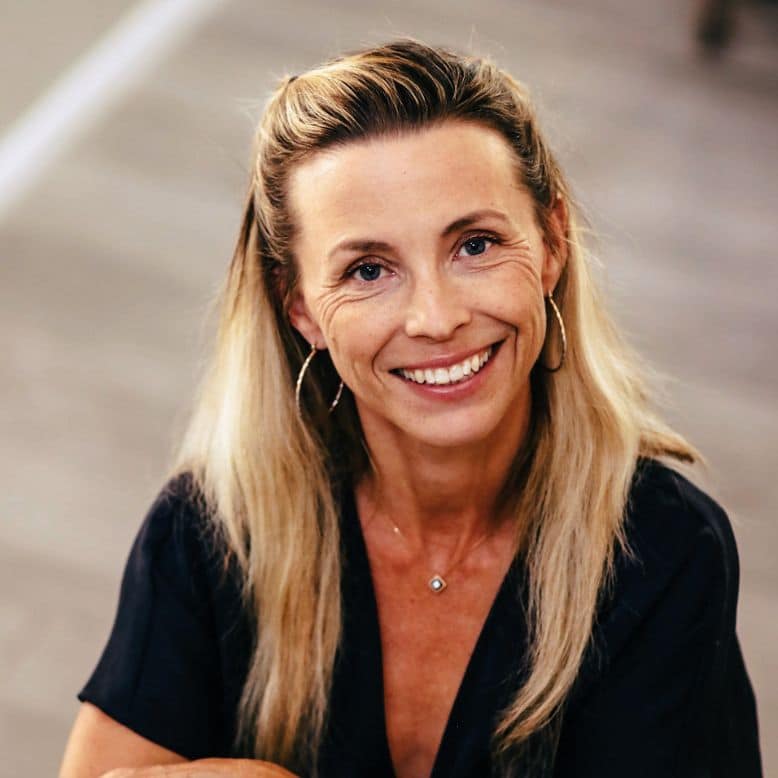
Bridgit, got into the natural medicine field 23 years ago as a young environmentalist. She is an acupuncturist, a functional health coach, and a health educator. She is an expert in everyday detox, functional living, and toxic mold illness at bridgitdanner.com. She is also the founder of a line of... Read More
- Discover how simple it is to support your mitochindria through your daily routines. We’ll cover everything from food to coffee enemas.
Related Topics
Brain Health, Detox, Dna, Everyday Detox, Fragility, Functional Living, Immune System, Inflammation, Living Well, Memory, Mitochondria, Mold, Motor Skills, Movement, Mycotoxins, Nutrition, Oxidative Stress, Toxic Mold, ToxinsLaura Frontiero, FNP-BC
Welcome back to another episode of the Restore Your Mitochondrial Matrix Summit. I’m your host, Laura Frontiero. I’m bringing you experts to help you boost your energy and fix your health so you can build the life you love. And today my special guest is Bridgit Danner. Hi Bridgit, welcome to the summit.
Bridgit Danner
Hey, Laura, happy to be here.
Laura Frontiero, FNP-BC
I am so excited to have you here because you are literally a household name in detox, and you have so much knowledge to share. So we’re gonna go all things detox today, and talk about mold and toxins and all kinds of stuff. And first, I wanna just introduce you to our audience because I’ve actually admired you from afar for years. I’ve been a fan of the work that you have done in this space. And interestingly, you got into natural medicine 23 years ago as an environmentalist of all things. You’re an acupuncturist, you’re a functional health coach, and you’re a health educator. And you’re an expert in what you call everyday detox and functional living and toxic mold illness. And you’re the founder of a line of detox supplements called Functional Detox Products. So we’ll let everybody know where to get in touch with you and get information on all of that at the end of our talk today. But welcome, welcome. So pleased to have you here.
Bridgit Danner
Yeah. I’m happy to be here. I get really excited about the topic of mitochondria. I it’s think something worth knowing about for everybody. So I’m glad you’re putting this on.
Laura Frontiero, FNP-BC
Yes. Yes. It’s so important. As we all know, it’s foundational to healing your body from chronic illness, chronic toxin exposure, chronic disease. So you have a personal story about exposure to toxins. And can you share a little bit about that before we get into what mitochondria have to do with all this?
Bridgit Danner
Sure. I’ll go back even a little further then. Yeah, I got into natural medicine because I was an environmentalist as a college student and I was just trying to find a career that would make a difference in how people live on this planet and that kind of a thing. So I ended up studying Chinese medicine and then I just sort of started my practice. I was in Portland, Oregon, so it was already a pretty green city. So I would say environmentalism was like part of a lifestyle there, but it wasn’t really part of my practice. I was just treating, you know, elbow pain and the usual things.
But living in that rainy city, I didn’t realize I was living in a moldy home and it took actually like eight years to find out and my symptoms were just increasing and increasing. So I was learning more about detox and paleo eating and everything during that time. But as I kind of know now and teach my clients, if there’s an underlying toxin that’s stressing your body some of those other habits won’t really move the needle completely. So I often say if you’re doing all the things right and you’re not getting better, look for toxins. So that was my case. You know, it kind of started with anxiety and period problems and some insomnia and digestive problems, getting sick often, lots of immune stuff. And then it kind of peaked at having strep throat and just being super exhausted. So the fatigue piece came in deeply later in the process for me, is actually when I started working from home to have an online business.
Then I got sicker because I was in the home and I didn’t know it was moldy. Yeah. So that’s when I really, I think hit my mitochondrial low point. I was just in like constant exposure. And then we found out that we had mold, we started ripping up the house, made a lot of mistakes. So I had more exposure and got sicker. And that’s the point I really reached I was so tired that I was just sort of fantasize about not waking up in the morning. And that was scary for me. It’d never been like that before. But that’s to me, in my mind and my opinion, sometimes how a real mitochondrial deficit can feel. You just have nothing to go on. Everything is so much effort just to get through the day. And so I mentioned to you before we came on, that one practitioner I worked with is Suzanne Bennett. She had written a book about mitochondria. So I read it and I started following some her advice in the book and it helped. It worked. So having some focus on mitochondria, even as I worked to detoxify and you know, certainly have to get outta mold was really helpful for me. So I know that the advice can work for other people as well.
Laura Frontiero, FNP-BC
Yeah. And I’m really glad that you pointed out, I think this is really key and I wanna highlight something you said was that if you’re doing all the things right, you’re eating paleo, you’re exercising, you’re using healthy skin products. You’re avoiding toxins as much as you can and you still don’t feel better. Or you’re doing all these healthy practices and you still don’t feel better, go looking for toxins because toxins create deficiency and illness. So this is really important, I think for people to get. Because how often, I mean, you and I both have worked with many people who come to us and say, “I’m doing everything right. And nothing’s working.”
Bridgit Danner
Yeah. Yeah, and it can be mold, or it can be, heavy metals or it can be internal toxins. Like if you have lime infection or what have you. So there’s so many sources potentially. But yeah, I think that that’s a great kind of rule of thumb. If you’ve got your hormones kind of managed and your nutrition managed and your sleep managed and you’re still pop corning symptoms all over the place, that’s not how your body’s supposed to work.
Laura Frontiero, FNP-BC
Right. Right. So let’s talk about mold and let’s talk about, I wanna get into your everyday detox today and what functional living is. But let’s talk about what is toxic mold and how they affect mitochondria.
Bridgit Danner
Yeah, so there are thousands of types of mold and only about a dozen are toxic. But even just having different water damage incidents in your home, just the overall load of mold can be a burden on you whether the strains are toxic or not, because of the things they have. I mean, they’re organisms and they make waste and they reproduce and that if that’s all happening in your home, it is a strain on your immune system. And then some produce these things called mycotoxins that are kind of a protective mechanism for the mold colony, but they’re very poisonous to humans. So if you’re living constantly around them you’re going to be breathing them in. That’s kind of the main method of transmission.
I like to use this example, if you’re breathing in toxins through your nose that can cross the blood brain barrier, break down the blood brain barrier, enter cells, enter mitochondria. They are lipophilic. They are hydrophilic. They can travel anywhere they want in your body. So mitochondria, even though they’re so important, they’re not as well protected as they should be, so to speak, and microtoxins can get in those cells and just be one of the many types of toxins that affect them. But then they go on and affect other body systems and functioning in other ways as well.
Like I mentioned, they can penetrate the brain and your hypothalamus pituitary is right there, right above your nose basically. So the limbic system is right there at the center of your brain. And then it can affect any area of the brain once it’s kind of broken down those barriers. Your brain should be completely protected from toxins, but then it can inflame or shrink different areas of the brain. So then it could affect your motor skills, your mood, a lot of people just have trouble remembering things, they can’t do their job anymore. so it can be pretty serious effects. And I think, like we talked about earlier, how I changed my diet and I was doing… To some extent you can keep some of the stuff at bay. You can be somewhat still able to function. But it gets to a tipping point I think, where things are getting worse instead of better. And so that’s where I got in my journey. I think that’s where a lot of people get in their journey. So it’s just a good thing to know about cause it is so incredibly potent and dangerous potentially. So you could be living in it and just kind of slowly things are not so great. And then it’s just gonna get, frankly, it’s gonna get worse and worse.
Laura Frontiero, FNP-BC
Yeah. So what does it do to our mitochondria? What happens to those little organelles that are supposed to be healthy and building up our energy and regulating hormones?
Bridgit Danner
Yeah, I have a bunch of notes on this stuff, actually. So the mitochondria have these folds, right. And it disrupts their structure and shape. It swells the mitochondrial membrane. Let’s see, it damages the membrane so the nutrients coming in and out aren’t able to pass. Let’s see, I have some other notes here. Oxidative stress to the DNA. Let’s see, this is a long list. I can’t find all my notes on it.
Laura Frontiero, FNP-BC
It is. Mitochondria are so fragile and they need the perfect environment. And it sounds like the mold just disrupts all of that and then mitochondria can’t function.
Bridgit Danner
Yeah, yeah. That’s basically it. I’m sure you have other speakers talking about the mitochondrial function and what it needs and it can’t… It’s interesting ’cause again, it’s such an important part of our bodies, but they’re pretty susceptible to different modern toxins. And these mold toxins aren’t modern toxins, but the way we sort of live in these static homes that are built in certain ways makes us exposed to them in ways I don’t think that our nomadic ancestors necessarily were. So that’s sort of the difference.
Laura Frontiero, FNP-BC
Yeah. Yeah. So what are the symptoms? What might people experience if their mitochondria are suffering from toxic mold?
Bridgit Danner
I would say chronic fatigue, chronic pain, brain fog associated with autoimmunity. A lot of people with mold do have like Hashimotos, or they’re definitely at risk for developing different auto immunities if those have been diagnosed for you. Muscle wasting oh, weight gain, there’s really just so many different signs and symptoms I think potentially.
Laura Frontiero, FNP-BC
Yeah, and then once we identify that those symptoms are not getting better from everything we’re trying. You just, you’re going on and on with symptoms no matter what you do and you’ve identified there’s mold. I think Bridgit and I both agree, you and I both agree, it’s important to do a microtoxin test to see exactly what we’re dealing with, do you have the toxic strains. And then what, from there? You’re a specialist in detoxing and helping people get it out of their bodies. So how do we detox?
Bridgit Danner
Yeah. So again, a lot of those foundational things, like I said can keep you at bay are still important to keep doing once you get out of a moldy environment. So eating real food, making sure you get a good night’s sleep, getting like some moderate exercise. Over-exercising can be too much oxidative stress, but under-exercising isn’t good either. So you need to get that oxygen, get that movement. So I kind of have people go through 10 or 15 kind of foundational things. Like are all these things in place for you before we start detoxing harder, so to speak? Are you getting outside? Do you have support? Are you in a mold free space? Are you pooping? That’s important. And then you’re allowed, so to speak, to detox. And one of the other things actually on that list is knowing about detox and potential side effects.
Instead of just like jumping in the deep end, understand what you’re getting into. And if you’re sensitive to supplements or you’re already in a weak state, which you probably are, knowing like to how to go slowly, try one thing at a time. So, I do sell supplements. I’m a fan of supplements, but in the detox space, I really love techniques. They worked for me pretty much the best, especially in the early days of my detox. So I was using the sauna and dry brushing were the first couple things I did. I think maybe about a year later or nine months later I started doing coffee enemas. I did some green juices.
Epsom salt baths I advocate for, and I had a rebounder. So a lot of these things just move lymph. So it just helps get detox pathways kind of moving. So again, as long as you’re pooping and you’re getting nutritious foods and stuff, hopefully your body can handle some toxicants now moving around getting hopefully pushed out. The trouble is if your detox pathways aren’t strong enough, then sometimes those techniques can make you feel a little worse. So that’s just information that you need to take a step back and be like, “Okay, maybe I need less time in the sauna” or “Maybe, I need to use a binder when I use the sauna” or “Maybe I’m just not ready for this technique yet.” So, but yeah, I’m a big fan of all that. And that’s still how I live. I do a coffee animal once a week still. I think a lot of things I learned along the way, I still live that way, and we’re all exposed to toxins.
Laura Frontiero, FNP-BC
Can you unpack coffee enemas for a second? I don’t think we have any experts who’ve talked about this yet. And this is really an inexpensive, fantastic way that you can support liver and gallbladder and support glutathione in the body. So talk about that. Cause I think people kind of have an aversion like, “Coffee enema? What the heck?”
Bridgit Danner
I know just culturally, it’s just not something we… We’ve been taught to think it’s gross or something. I think in Europe they’re not as much like that, but I’ll have to go do some coffee enema research in Europe. Yeah. I think when I had first heard about it, I heard oh, it can be kind of dangerous ‘cuz maybe your bile duct is clogged or something like that. And I thought, well I guess maybe it’s a bad idea. But then I heard about it again from Jay Davidson and he really explained how to do it and some of the benefits. So I was still quite sick at the time and I was like, well I might as well try. You know, you’ll kind of try anything if you’re sick enough.
Laura Frontiero, FNP-BC
Yeah.
Bridgit Danner
There isn’t a lot of good study on coffee enemas, unfortunately, but I still included them as one of my top five detox techniques because they’ve been so impactful for me. But the premise is that it’s getting this light roast coffee that’s high in certain compounds. It’s basically to affect the bloodstream to the liver. So it’s not really about your bowels, it’s just a way to get kind of close to the liver and the bloodstream. So you retain this coffee in your bowels, I can explain that more if you want, and the compounds encourage glutathione recycling production. It’s the most prevalent antioxidant in your body and it’s getting depleted from chronic toxin exposure.
So most people who have been in chronic exposure, they just couldn’t keep up their glutathione levels and other antioxidant levels. So it’s affecting your bloodstream while you retain the coffee. And then your blood is passing through the liver getting kind of like filtered by a new, fresh source of glutathione. So people always say, “Well, can’t you just drink coffee?” Or “Aren’t you just like getting a…” It’s not the same, obviously. You do get, I think, a little caffeine effect, but you also get this deeper energetic effect I find.
Laura Frontiero, FNP-BC
Yeah.
Bridgit Danner
So when I was really sick and just dragging through the day, doing a coffee would make me have at least six hours or eight hours where I felt pretty normal. So it was game changing for me and yeah, a lot of my clients do it. And sounds like, have you done it to Laura?
Laura Frontiero, FNP-BC
Yes. And it is game changing. And I’m glad we’re talking about this. I think this is a really important topic just to have people feel comfortable and safe about it. Because you’re right, there’s not a ton of research about it and Western medicine certainly isn’t gonna teach this or use it. But it’s like Bridgit said, it’s all about that blood supply to the liver and the gallbladder and your bowels. Your colon is a fantastic place to give your body supplements and support. It gets right to the bloodstream, it’s pretty amazing. So I love you said it’s not really about your bowels, it’s about your liver.
Bridgit Danner
Yeah.
Laura Frontiero, FNP-BC
So on that note, medications that come in suppository form or supplements that come in suppository form is also a fantastic way to get that into your body.
Bridgit Danner
I think that’s what I’ve heard about more in European medicine. There’s more suppository medicine, it’s more like… Apparently there’s an enema reference in the Bible too. So it is an old technique. It’s just something our modern American sensibility has decided is so gross. Yeah. I will also say, it’s not really that gross to do. I mean, it’s not like stuff is flying all over the place.
Laura Frontiero, FNP-BC
No. And so on that note, here’s my tip and I’m sure you’d agree. Until you become really proficient at holding the coffee in, just do it sitting on the toilet. You don’t need to be laying on the bathroom floor on towels on your side because the first several times you do this, you might only be able to hold it for a couple of minutes, and trying to get from the floor to the toilet can be a disaster. So just do it on the toilet. You don’t have to be laying down to get a benefit from it. But once you-
Bridgit Danner
I actually haven’t heard that, okay.
Laura Frontiero, FNP-BC
Yeah, so once you become an expert and you get really good at it, then you can do the whole side lying, make yourself comfortable, read a book while you’re holding your enema and then get up and move to the toilet. Because now you’re an expert at holding it in. And I think that’s why people give up. I mean, I’ve had clients who tried it right out of the gates laying down. They’re like, “I’m never doing that again.” “It got everywhere all over my bathroom.”
Bridgit Danner
Okay. Well here’s my tip along that line, which is don’t put so much in and not so quickly.
Laura Frontiero, FNP-BC
Yeah.
Bridgit Danner
So it’s not about like, this is another Americanism, right? It’s like we wanna supersize everything. It’s like, if you can’t hold a large amount of coffee, let your body adjust by putting in it slowly and don’t hold so much. I’m five feet tall. I don’t use a huge amount. I’ll use my whole bag, but I may do four rounds sometimes to do it, but it makes me more able to hold it. And then as you do more rounds your body gets more comfortable. So it’s an adjustment. And if you’re wondering what the heck we’re talking about, I do have a YouTube video on it. It’s not graphic or anything. It’s actually my most watched YouTube video. So people are interested. And I’m gonna make one for Instagram too, just kind of going over the details. I think one thing I found from my own audience is they said recently they wanted to learn more techniques. And I’m like, all I do is teach you guys techniques. But I think they’re struggling with getting over the hump of trying it the first time, right?
Laura Frontiero, FNP-BC
Yeah.
Bridgit Danner
So you have to buy the equipment, you have to get familiar with the instructions. You have to maybe have a small disaster the first time. But after three, four times, you’re fine. It’s just like everything else. I know it can be intimidating when you’re already sick to learn new things, right?
Laura Frontiero, FNP-BC
Totally.
Bridgit Danner
But it’s just like anything else you have to learn. Okay, what do I need to buy? How do I set up? So I have it all in my book or in that video. And I think especially if you’re really tired, you’re trying to detox. I think you’re gonna like it if you give it a few tries.
Laura Frontiero, FNP-BC
Yeah. I’m so glad we went down this rabbit hole. I think it’s really important to normalize this and to share with people. I mean, it’s easy as a practitioner to say, “Yeah, do a coffee enema” and people, what? But to unpack it like this, really talk about it. So go find Bridgit’s YouTube video on coffee enemas. This is a perfect segue into talking about what is functional living. Because this is something you specialize in so you can tell us what that means. What’s functional living and what are some examples of how to live that lifestyle?
Bridgit Danner
Yeah. I think I’ve used that phrase a couple places and I don’t know if I made it up or I just sort of put things to… In my mind I’ve heard of functional movement, functional medicine, functional this, and to me it’s like all of that together. Right? So it’s really what are you doing every day to function your best within the bounds of nature, you know? So utilizing, getting morning sunlight and getting sun on your skin and your eyes and getting your feet in the grass would be like one example. Unfortunately in modern day we have to kind of remind ourselves to do these simple things ’cause we don’t really live in nature the same way anymore. So reminding ourselves to move, to chew our food, to go to bed at a reasonable time, to hug people, to laugh and enjoy your life.
I feel like now, yeah, again we have to kind of remind ourselves these are the things that make us healthy on a daily basis. And then for me also it’s detoxing in some way pretty much every day. It takes you two minutes to dry brush before you take a shower, or make a lemon water in the morning, to jump on your trampoline. It doesn’t take long, but as you slowly learn different techniques from this event or just as you study, you’ll have this whole menu of things you can possibly do. And then in moments where you feel tired, instead going to Starbucks you can sniff essential oils or drink water, and get outside. It gives you some solutions for those moments in life that are healthier and ultimately are going to improve your health.
Laura Frontiero, FNP-BC
Yeah. It just becomes a lifestyle, right? And I always say you don’t have to do everything all at once. Because it becomes totally overwhelming to change your lifestyle all at once, but if you just incorporate. What happens is, over time you start looking around for the next thing to shift. So you’ve mastered something and then you start thinking, “What else can I do?” “What else could I do to support myself?”
Bridgit Danner
Yes.
Laura Frontiero, FNP-BC
And something you said, I think the importance of laughter and joy and hugging, just all that is so important. I’m here visiting my family right now. And last night, everybody keeps telling me to watch this show, but I haven’t yet because I don’t have Apple TV. But my mom finally convinced me last night. She said, “Let’s watch Ted Lasso.” And I laughed. We watched four episodes.
Bridgit Danner
I’ve heard it’s really good. I’ve never watched it.
Laura Frontiero, FNP-BC
It just reminds me how important laughter is. I laughed my butt off and so did my daughter who’s 17, and so did my husband, and so did my dad. It crossed all generations and we all just laughed and laughed and it’s so heartwarming. It’s definitely warm and fuzzy and funny all at the same time. So that’s so important. Laughter and joy and it’s just vital.
Bridgit Danner
It is.
Laura Frontiero, FNP-BC
It helps your mitochondria, everybody.
Bridgit Danner
Yeah. There you go. I mean, again, I think we can get so wrapped up in the current events and politics. It’s heavy stuff and it’s gonna affect your body to think about that all the time. So yeah, just play with your dog and do the simple things. I mean, once you get out of the restoration phase of health and you really can, then you’re in this maintenance phase. So you need do these good habits and maybe some extra detox and extra practitioner support. But then you have the rest of your life still to live and you wanna have energy for hiking or getting through your day or what have you. So yeah, I think that all those little things and just kind of keeping those in your awareness and whether you journal or you’re reading different books. Having something to remind you, or watching the summit, that, oh gosh, I really haven’t gotten together with my friends in a long time and I’m feeling it or whatever it is. So yeah, just having all that in your awareness, these are the things that keep me healthy and vital. To me, that’s like functional. Modern functional living we’ll call it.
Laura Frontiero, FNP-BC
Absolutely. I love it. I love it. And that’s my point about Netflix. It’s not going away or Apple TV or any of it. Use this modern technology to your advantage. Modern, functional living, I mean, laughter.
Bridgit Danner
Yeah, exactly. Yeah. Often my little thing, cuz I work from home and sometimes it’s kind of boring and lonely, when I make lunch, I’ll watch an episode of The Office or something. It’s only 20 minutes, but it just kind of lightens up my day, you know? So yeah. I don’t think it’s bad. I don’t sit and watch six hours of TV a day, but yeah we might as well just enjoy these things.
Laura Frontiero, FNP-BC
Yep. I’m a huge fan of figuring out how to make modern world living work and be healthy within it, right. So you touched on something, you said you’ve healed your body from toxic mold and toxins and you mentioned that there’s still things you do every day. So there’s another concept of yours, which is everyday detox. And you mentioned that you still do a coffee enema once a week. So once people have healed, mitochondria are functioning, they’ve removed smoldering infections in their body like parasites and bacteria. They’ve cleared out microtoxin mold infections. They’ve cleared out toxins like heavy metals, environmental toxins. And now we’re still living on planet Earth. We’re still exposed to toxins in our environment. What do you do for everyday detox? It’s interesting because my clients always say, “Okay, so when I’m done with the protocol I’m done, right?” It’s like, well you’re not done living on planet Earth. So you’ll probably have some more work to do.
Bridgit Danner
You can’t go to McDonald’s to celebrate, you have to keep… Yeah. Yeah. I mean, I think that once you’ve seen the benefits you don’t mind, right. I don’t know how long your clients have been on their journey, Laura. But I think if you’ve gone through mold and it’s been a three, five year process, which frankly it often is. And you’ve seen, “Oh, I feel better when I don’t have gluten or I don’t drink as much.” It’s not as hard to stay away from those things. And there might be nights where you know, you push the limit and you’re allowed to. But I think you kind of find your balance of “Yeah, I do feel better when I get a salad in every day.” And so speaking of mitochondria, it loves antioxidants. So I think that’s a great thing to get in. So eating colorful foods. I think blueberries are the most well known antioxidant.
All the berries are good, but there’s antioxidants in nuts and grass fed butter and all sorts of things and in supplements too. So when I was sick, I got turned on to CoQ10, actually from Suzanne Bennett as well. And I was really at the point where I felt like I tried every supplement and I didn’t have the best attitude, but I was like, I’ll just try it. And it definitely made a difference. So CoQ10 is really great for your mitochondria and we make less when we age and we have more oxidative stress when we’re exposed to toxins. So CoQ10, I like. I just like Vitamin C, Vitamin E, Vitamin A. These can all be in your multivitamin or in special individual forms. Glutathione is an antioxidant. You can get it from coffee enema but you can also take it as a supplement. I’m trying to think some other antioxidants I like.
Laura Frontiero, FNP-BC
Green tea.
Bridgit Danner
Green tea, yes, that’s like a super antioxidant. Tumeric is a pretty well known one as well. Grape seed extract. And all our bodies are a little different. So you may love how green tea works for you and I may love how CoQ10 works for me, and so there’s some trial and error with your favorites. And one thing I learned from Dr Kharrazian is it can take a while too, while you’re healing, to get to the point you’re really absorbing those. Cuz if you’ve been sick a while you probably have an inflamed gut, a leaky gut, and likewise your blood brain barrier is also leaky and inflamed. So it can take a little while till while maybe you’re getting more rich foods in your diet, fibers and nuts and berries and trying some supplements. And maybe at first it’s just not really clicking, cuz it can take a bit for the body to, you know, you’ve gotta kind of go in and heal that gut and start to heal that brain barrier for things to start to really absorb. So give it some patience and just again, make it a lifestyle.
Laura Frontiero, FNP-BC
Yeah. I think this is another really key thing that you’re touching on is this isn’t a three month plan. I have so many people that are like, “Okay, I’m gonna be better in three months, right, six months?” This is gonna be, it’s like you lived into this and now you get to live out of it. And everybody’s journey is different depending on your genetics, how healthy your detox pathways are, how fast you can push. You mentioned earlier that sometimes you just have to pull back. You can’t detox that fast cause your body just can’t do it. So this is a process. But if you continue to stay committed to it and surround yourself with people like Bridgit and me and the speakers you’re seeing on this summit, then you’re gonna get the tools you need. And it may be a year long, two year, three, four year long process for you, but it’s possible. And Bridgit you’re living proof.
Bridgit Danner
Yeah. And I’m also living proof of how long it takes. So here I was like a practitioner already doing a lot of things right, and it still took me a long time. So I’m almost thankful for that because when people ask me that question, how long it’s to take, I’m just like, just put one foot in front of the other. This is gonna be a long journey. And I think I wish someone had told me that sooner. It might have bummed me out, but at least it would’ve been accurate. It’s not like a pregnancy where there’s an end point and the baby comes out. It’s more of like this longer journey. But all along, you’re getting better and better and you’re learning more and you’re growing. So that’s the good news. And then it becomes a maintenance process. But now I’m almost 48 and I have tons of energy. I’m super active. I’ve been through all this drama with mold and co-infections and all that stuff and I’ve come out on the other side a much healthier, more vibrant 48 year old than the average 48 year old, right? Because I have all these tools.
Laura Frontiero, FNP-BC
Absolutely. And you know, it’s gonna take as long as it takes. And I think you’d agree, when you’re working with a practitioner and expert on healing our goal is to get you some quick wins, right. In the beginning so you start to feel better and then you build from there, and build from there. So like you said things are gonna change along the way some slow, some fast, and then you just keep going.
Bridgit Danner
Yes, yes.
Laura Frontiero, FNP-BC
Yeah. It’s been amazing to have you here. You’re just a wealth of knowledge. I’d love for you to share how our viewers can find you, get ahold of you, see your supplement line. Where are you at?
Bridgit Danner
Sure. So my main site is just my name, which is Bridgit Danner. And we have a whole bunch of free eBooks on there about mold and diet and hormones. So if you wanna start there, that’s a way to start. And yeah, there’s a link to our shop. There’s a link to my book. So yeah, we’ve been blogging and stuff for a long time. So there’s lots of info you can find there if you wanna follow up on anything that we’ve talked about today.
Laura Frontiero, FNP-BC
Amazing. Brigitdanner.com. And then you said, go find the coffee enema YouTube video.
Bridgit Danner
Oh my gosh.
Laura Frontiero, FNP-BC
I gotta go find that.
Bridgit Danner
It’s so funny that that’s my most famous video.
Laura Frontiero, FNP-BC
Your audience has told you what they need, right?
Bridgit Danner
Yes. I think if you just put in my name and coffee enema on YouTube it will come up. And I think we have a blog about it. It is described in detail in the book. And I basically got Dr. Jay Davidson’s permission to use his recipe cuz it’s the same recipe I still use to make mine. So yeah, if you’re feeling like a new adventure this weekend, you can do the coffee enema and think about Laura and I.
Laura Frontiero, FNP-BC
Perfect. That’s right. You should, but you should get some instructions cuz it’s important how you prepare the coffee. It’s important. All that’s important. So yes. Oh gosh it’s great, Bridgit. Any final words for our audience before we say goodbye today?
Bridgit Danner
No. I just appreciate everyone who is out there learning about their health and not giving up. I would say that’s another important thing as you go through a chronic illness is that really it does make a difference to just keep learning and keep pursuing new things. Because we’re not all the same. So finding your solutions will take time. But yeah, I think I’m proof and a lot of people I know are proof that you can get through it and get your energy back.
Laura Frontiero, FNP-BC
Totally. Well, thank you everyone for viewing. And Bridgit, you have an amazing day. Thanks for being a part of the summit.
Bridgit Danner
Thank you.
Laura Frontiero, FNP-BC
Take good care. Bye now.
Downloads
